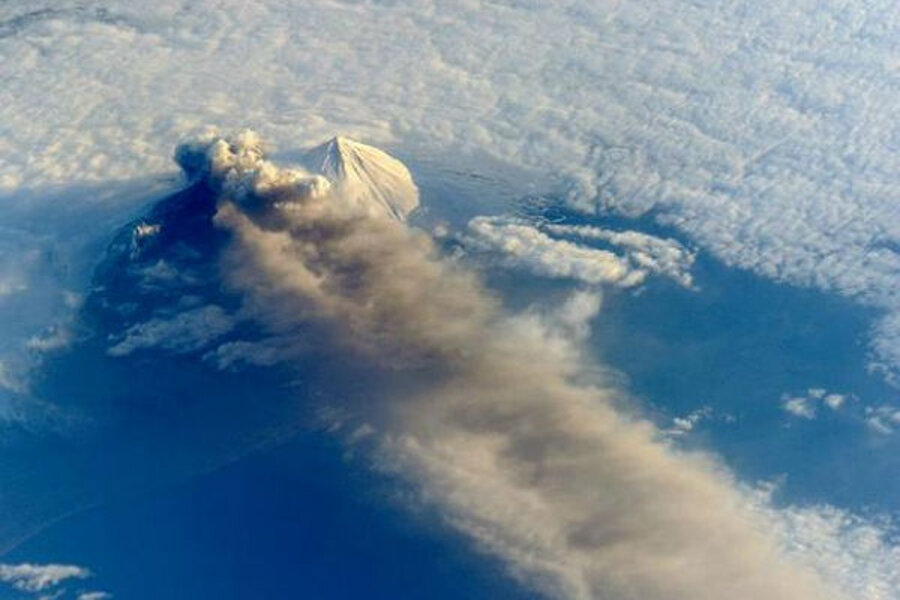How fast-rising magma contributed to deadly volcano
Loading...
Molten rock from Earth's hellishly hot mantle can punch through miles of overlying crust in a matter of months, a new study finds.
Before the deadly 1963 eruption of Irazú volcano in Costa Rica, magma surged 22 miles (35 kilometers) in about two months, traveling from the mantle to the volcano's shallow magma chamber, researchers report in the Aug. 1 issue of the journal Nature. The evidence comes from geochemical tests on crystals of the mineral olivine from ash erupted in 1963. Layers in the crystals helped re-create the magma's pre-eruption journey.
"We refer to our story as the 'highway from hell,'" said Phillip Ruprecht, lead study author and a volcanologist at Columbia University's Lamont-Doherty Earth Observatory in New York.
The discovery at Irazú helps confirm other clues for high-speed magma ascents, such as deep-seated earthquakes before eruptions at Mount Pinatubo in the Philippines and Iceland's Eyjafjallajökull volcano, the researchers said. Seismic tremors struck near the mantle below Pinatubo and Eyjafjallajökull in the weeks and months before the blasts. And other geochemical tracers in lava also suggest magma could shoot to the surface from the mantle in mere months. But the new study is the first hard evidence of a fast mode in volcanoes, Ruprecht said. [Amazing Images: Volcanoes from Space]
Skipping the stairs
Despite some clues suggesting speedy magma ascents, most models of volcano plumbing were akin to a slow pipe. A volcano's magma chamber fills from the bottom, like a sink filling from its drain. Many pulses of molten rock can pump into the chamber during a volcano's lifetime. Based on geochemical evidence in lava, researchers thought the magma melts would rise a bit, mix together, and then climb a little more, until finally reaching the chamber. The long journey happens over a span of thousands to hundreds of thousands of years.
"It's like going up a set of stairs. Each step is another change," said Adam Kent, a geologist at Oregon State University who was not involved in the study. "By the time you get to the surface, the magma has been changed quite substantially."
But the new study found evidence that magma feeding the 1963 eruption skipped the stairs and took the express elevator to the surface, mixing with other molten rock only at shallow depths, around 6 miles (10 kilometers) below the Earth's surface.
"This is telling us some interesting stuff about what's driving these volcanoes, which is hot stuff coming from deep within the mantle," Kent told LiveScience's OurAmazingPlanet. "The real proof of the pudding would be to find this behavior at many different places," he said.
Does this mean that monitoring volcanoes for earthquakes more than 10 miles deep could provide early warning of impending eruptions? Not for every volcano, the researchers said. [Countdown: History's Most Destructive Volcanoes]
Potential for eruption forecasting
Irazú volcano is an arc volcano, rising above a subduction zone where two of Earth's tectonic plates collide and one dives into the mantle. Some of the most massive eruptions in history came from arc volcanoes in the Pacific Ocean's "Ring of Fire," which tower above subduction zones.
Ruprecht and co-author Terry Plank are now analyzing olivine crystals from other arc volcanoes — including those in Alaska's Aleutian Islands, Chile and Tonga — for signs of fast-rising magma. "It's clearly in every arc we've looked in. [But] in terms of an arc setting, I don't think every second volcano will have it. It will be fewer than that," Ruprecht said. Looking at more volcanoes will also help researchers understand why some melts are rabbit-quick, while others rise like tortoises.
But most monitoring systems are laid out to look at shallow depths (6 miles, or 10 km), where magma and hot fluids force their way upward before an eruption, so new networks would have to be built to monitor the deeper goings-on. (These systems currently provide weeks to months of warning before an eruption.) And volcanologists would need to figure out how to predict eruptions from deep earthquakes without too many false alarms.
"Perhaps at volcanoes like Irazú and others like it, you could focus part of your efforts on looking for these deep signatures and know that in at least a year, you could expect an eruption," Kent said. "That's pretty useful from a hazards evaluation standpoint, but trying to figure out when a volcano might next erupt is a very risky game and very difficult to do."
Email Becky Oskin or follow her @beckyoskin. Follow us @OAPlanet, Facebook & Google+. Original article on LiveScience's OurAmazingPlanet.







